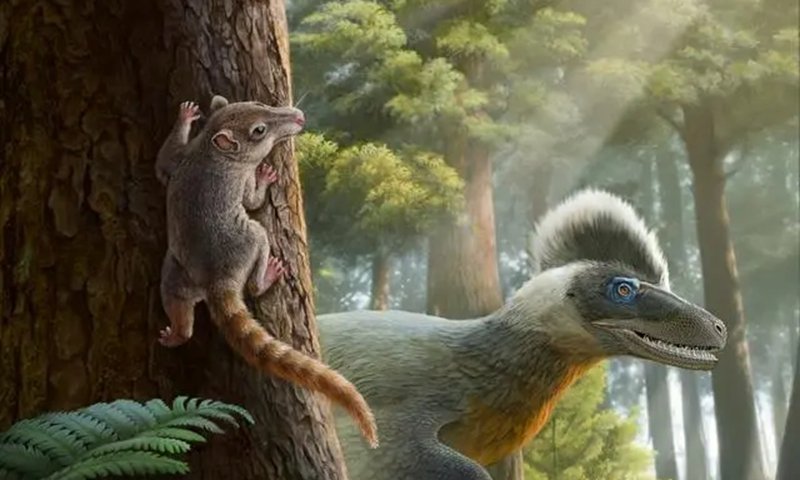Scientists from the Chinese Academy of Sciences (CAS) have achieved a significant breakthrough in paleontology by identifying a new eutherian mammal. This discovery is pivotal as it provides the first insight into the middle ear structure of a eutherian mammal from 120 million years ago, thereby bridging a crucial gap in the study of middle ear evolution during the early Cretaceous period. This remarkable finding has been published in the prestigious journal Nature Communications.
The mammalian middle ear is often cited as a textbook example of gradual evolution. Prior research indicated that the evolution from the lower jaw to the middle ear occurred in two distinct stages, ultimately leading to the detachment of the middle ear bones from the lower jaw. Despite the occurrence of this evolutionary event in various Mesozoic mammal lineages, concrete evidence regarding the middle ear evolution in mammalian ancestors, especially those closely related to humans, has been sparse.
Wang Haibing, the lead author of the study and a researcher at the Institute of Vertebrate Paleontology and Paleoanthropology of CAS, emphasized the scarcity of direct evidence in this area of evolutionary biology. The team’s discovery fills a vital void in understanding the ancestral lineage of modern humans.
The fossil that led to this discovery was unearthed several years ago by a team led by Wang Yuanqing, a researcher from the same institute. It was found in the Jiufotang Formation in the Yixian Basin of Liaoning Province in Northeast China, dating back to around 120 million years ago. After meticulous restoration, the fossil was subjected to high-precision CT scanning and three-dimensional reconstruction techniques, revealing its identity as a new species of early Cretaceous eutherian mammal. The team named this species Microtherulum oneirodes, with “Micro” referring to the microtype configuration of the middle ear, “therulum” meaning little beast, and “oneirodes,” derived from Greek, meaning dreamlike, in recognition of the fossil’s significance in bridging a key evolutionary gap.
Wang Haibing elaborated on the unique aspects of Microtherulum oneirodes, noting its display of features characteristic of the modern mammalian middle ear. This aspect makes it an especially significant find among the earliest eutherian mammals, shedding light on the initial stages of mammalian middle ear evolution.
The research team meticulously reconstructed the skull morphology of Microtherulum oneirodes and provided the first detailed description of the skeletal morphology of the middle ear bones in early Cretaceous eutherian mammals. Their analysis revealed that the Meckelian groove in the lower jaw of this creature had completely degenerated. This finding indicates that the middle ear ossicles had fully detached from the lower jaw, a key feature of the typical mammalian middle ear.
This discovery contrasts with that of Cokotherium jiufotangensis, another eutherian species also found in the Jiufotang Formation, which retained a more delicate ossified Meckelian groove. This suggests that even among closely related early mammalian species, variations existed in middle ear morphology.
Furthermore, the team integrated these findings into the latest phylogenetic framework, discussing the evolutionary trends of early mammalian auditory and feeding organs. They proposed that the divergence in the evolution of these organs occurred independently. The innovations in the auditory organs, including the middle and inner ear, of early Cretaceous eutherian mammals, along with the refinement of their feeding structures, laid a foundational role in enhancing the hearing abilities and expanding the ecological niches of modern mammals. This study not only provides a clearer picture of our mammalian ancestors’ evolutionary journey but also opens new avenues for understanding the complex interplay of evolutionary traits in early mammals.
READ MORE:
